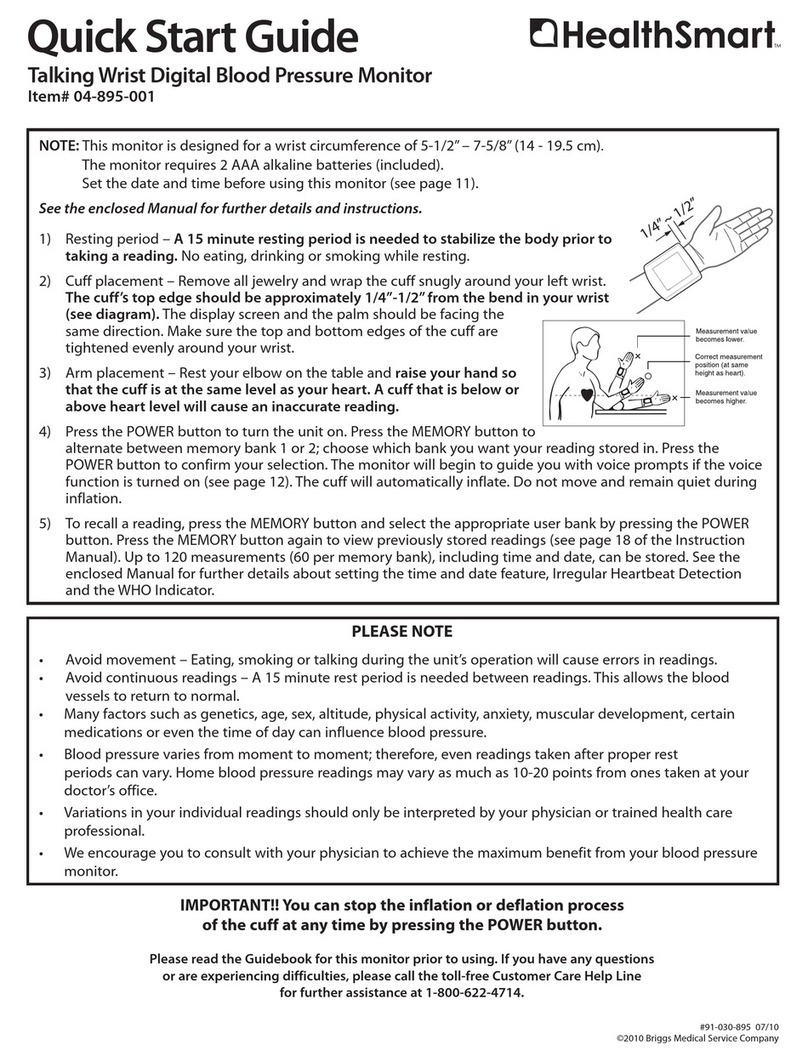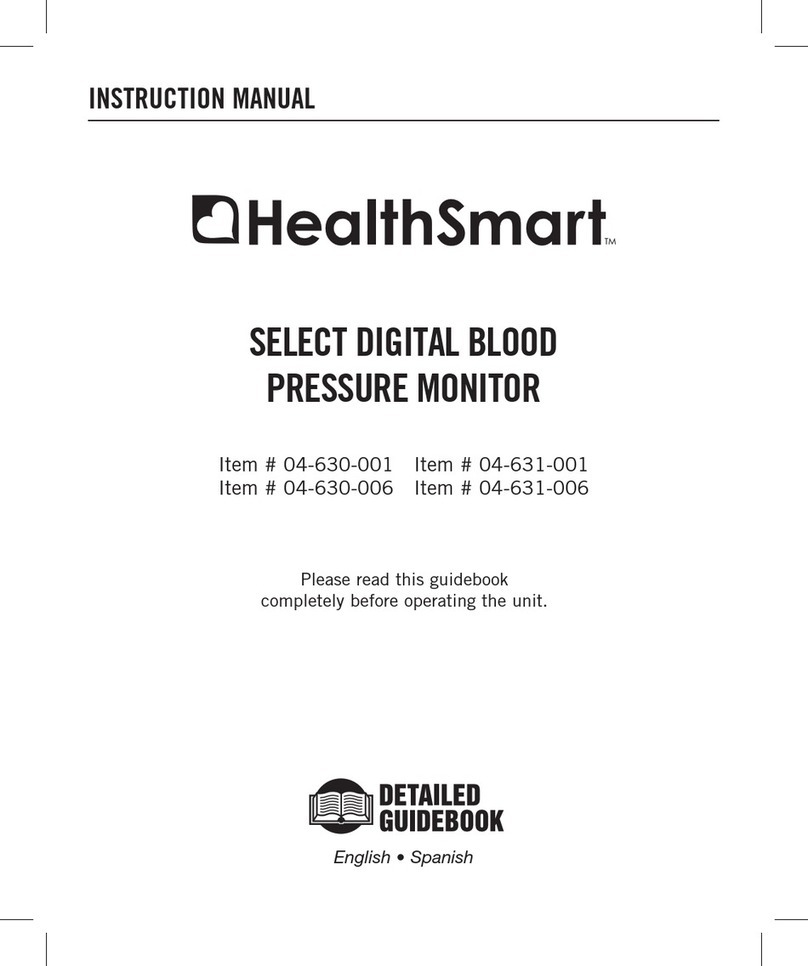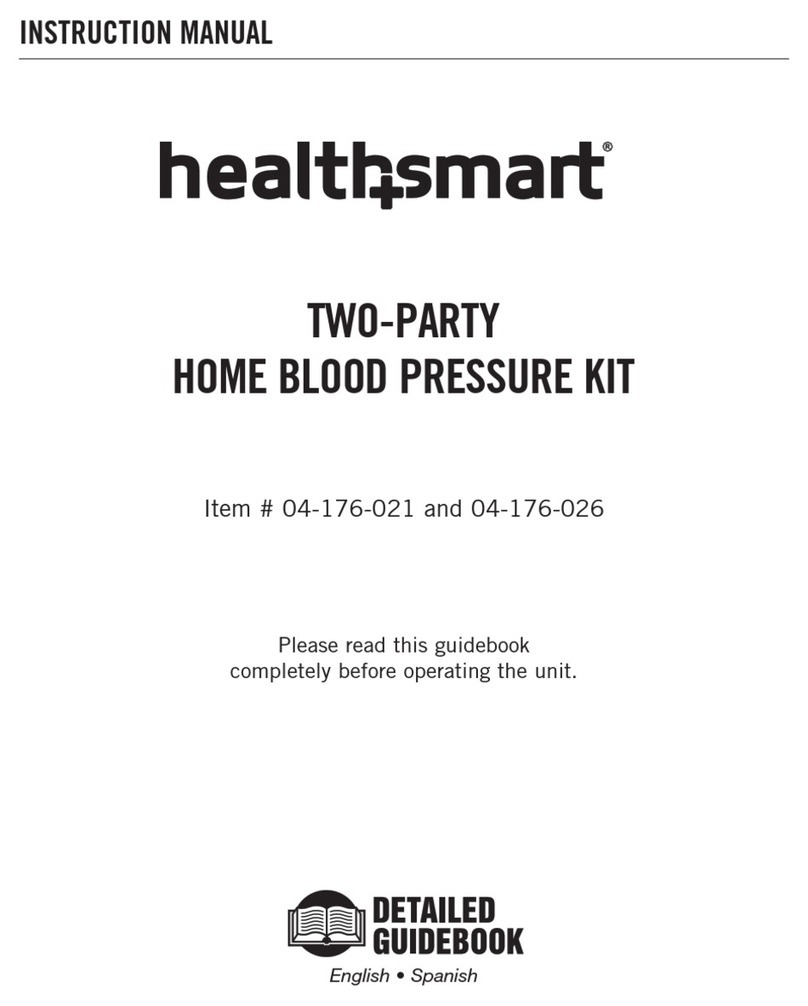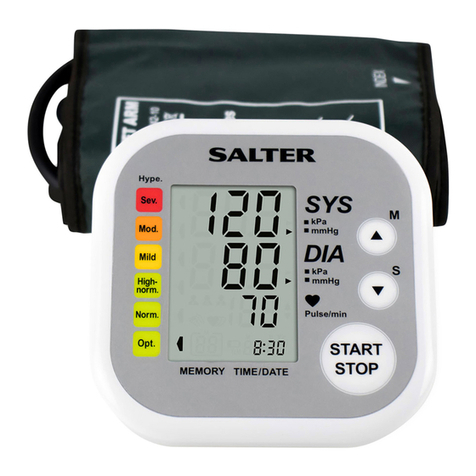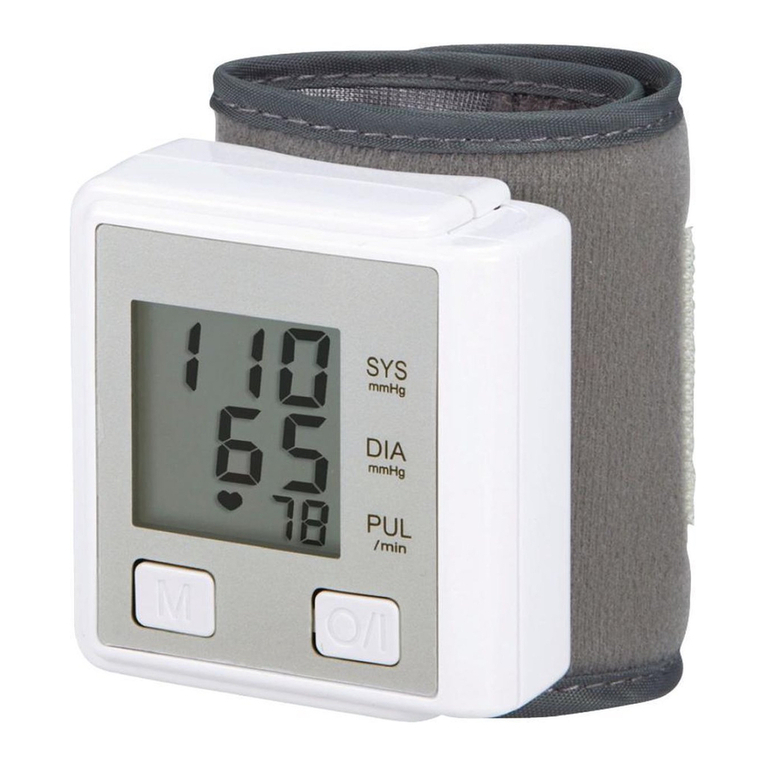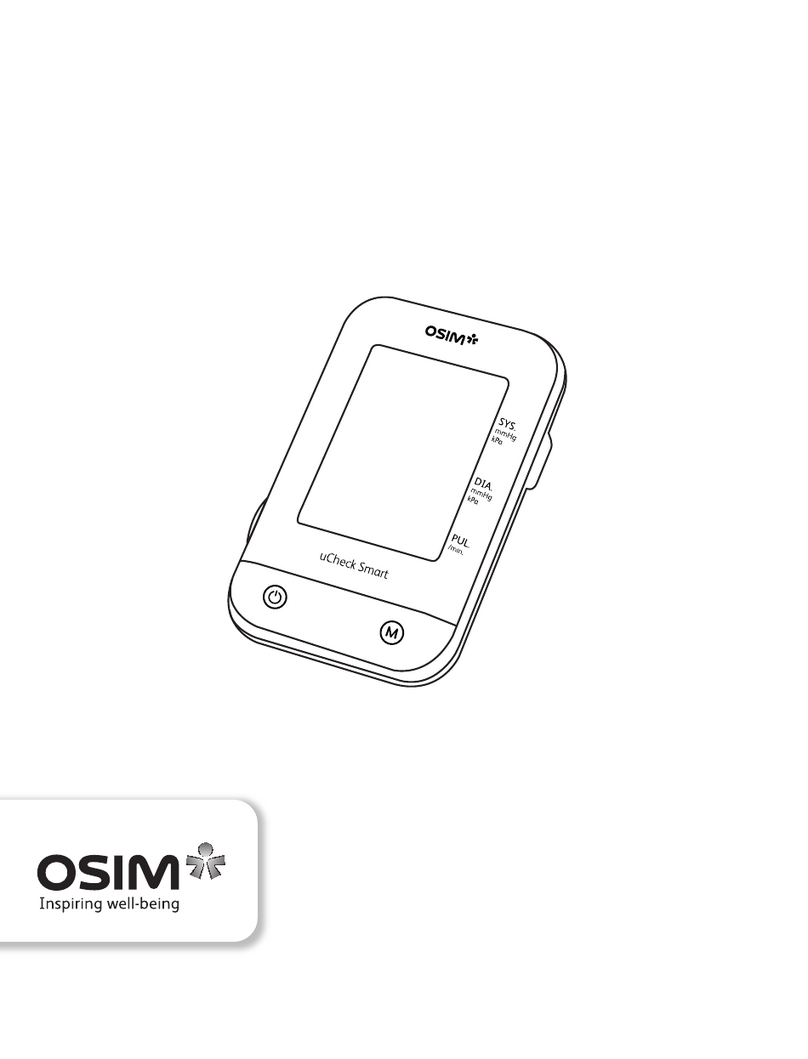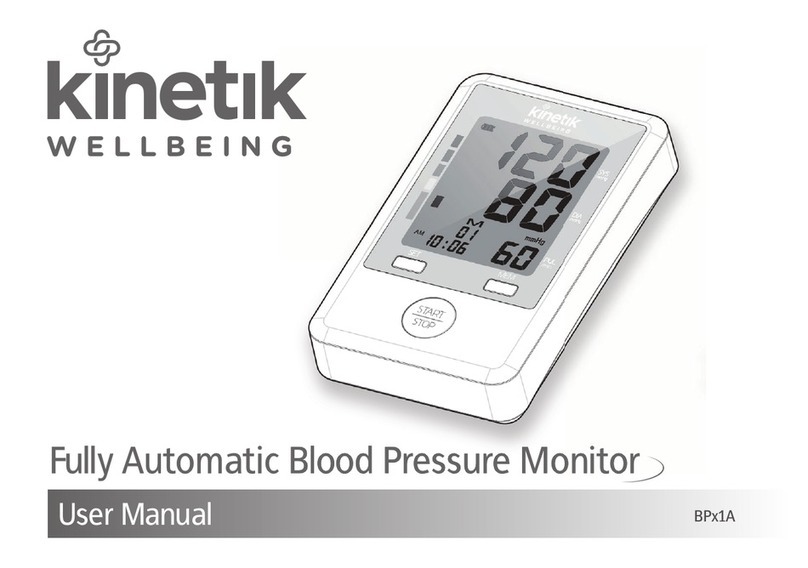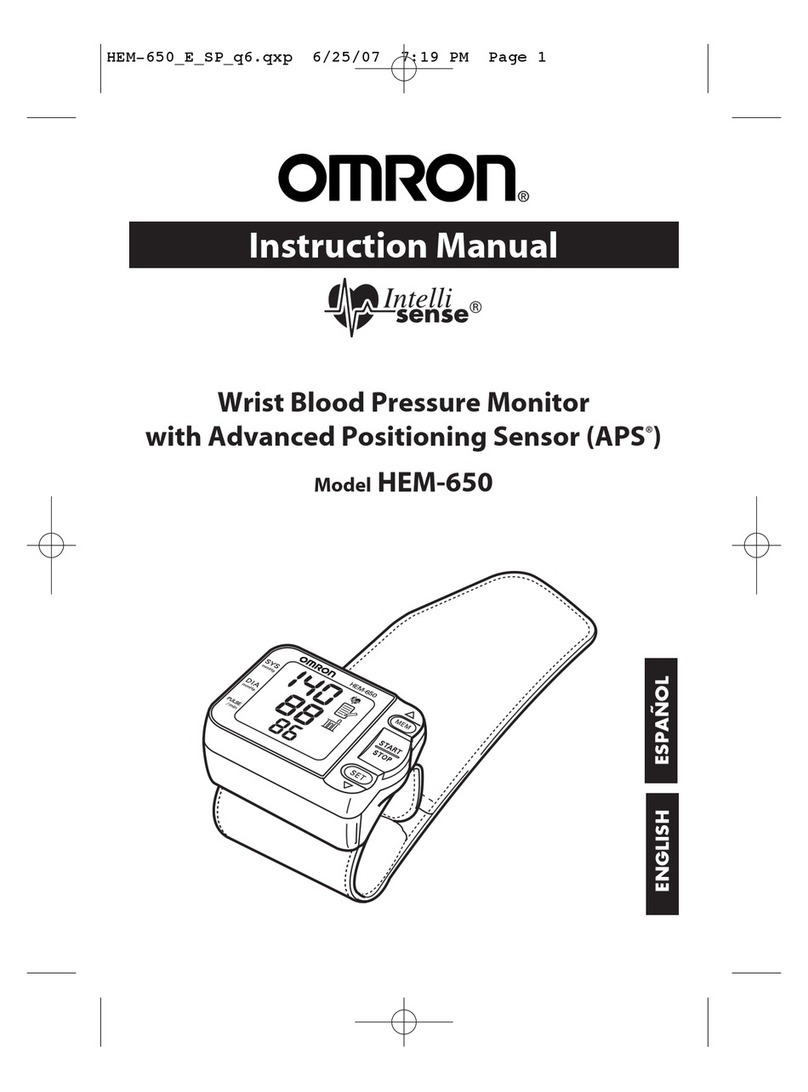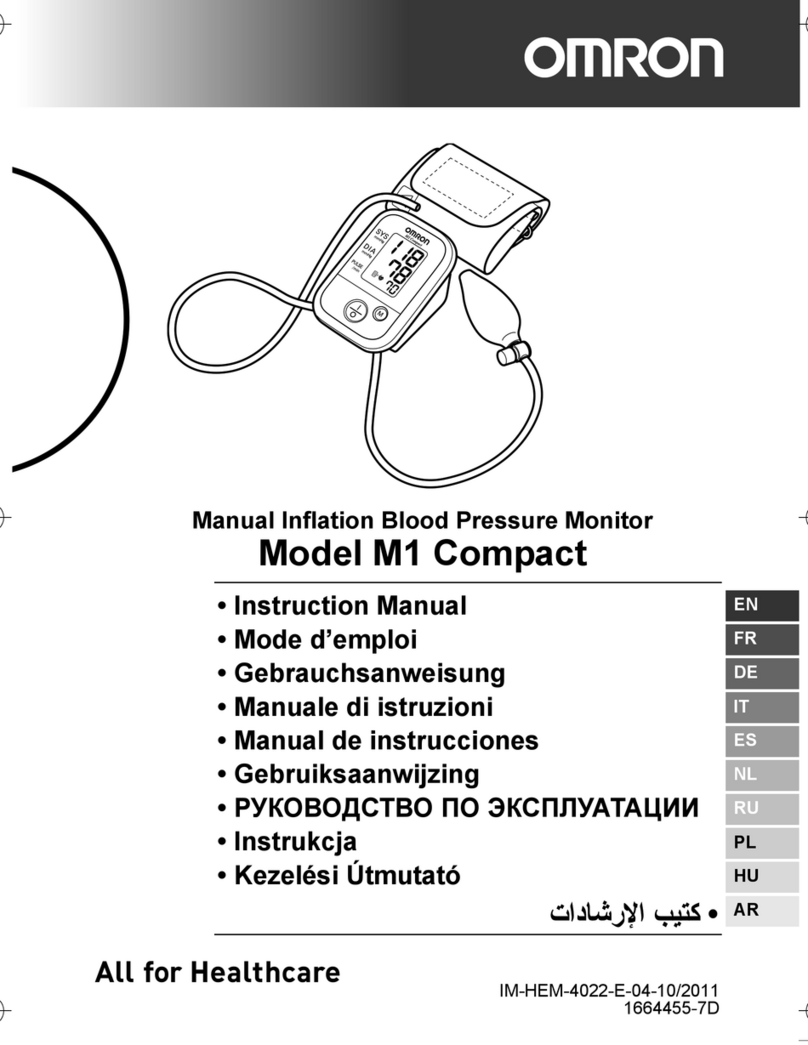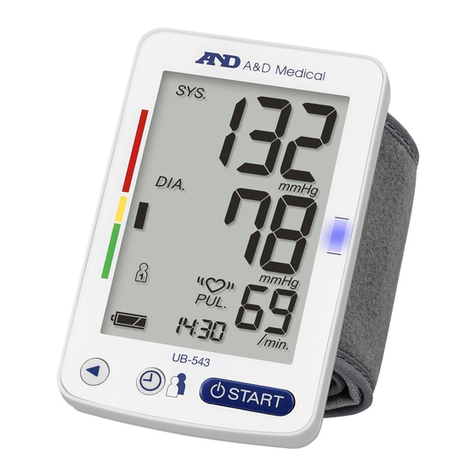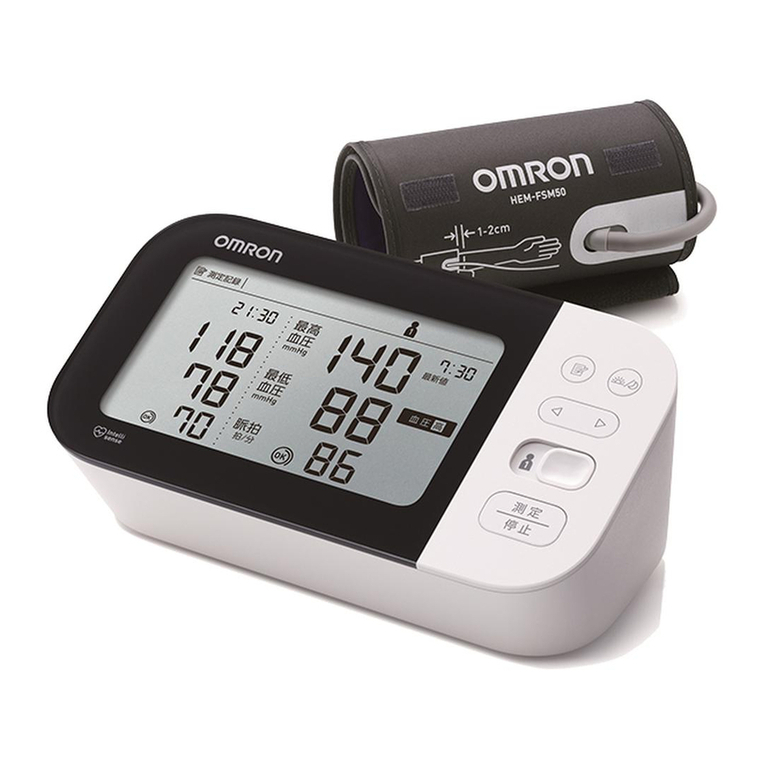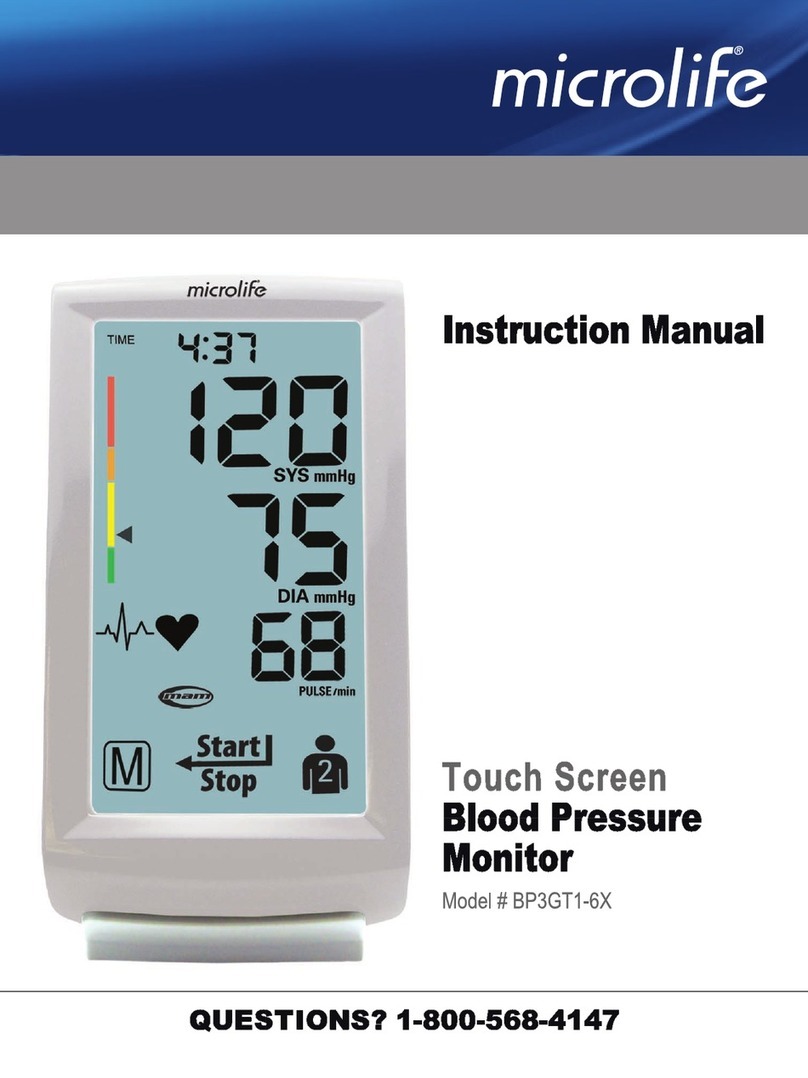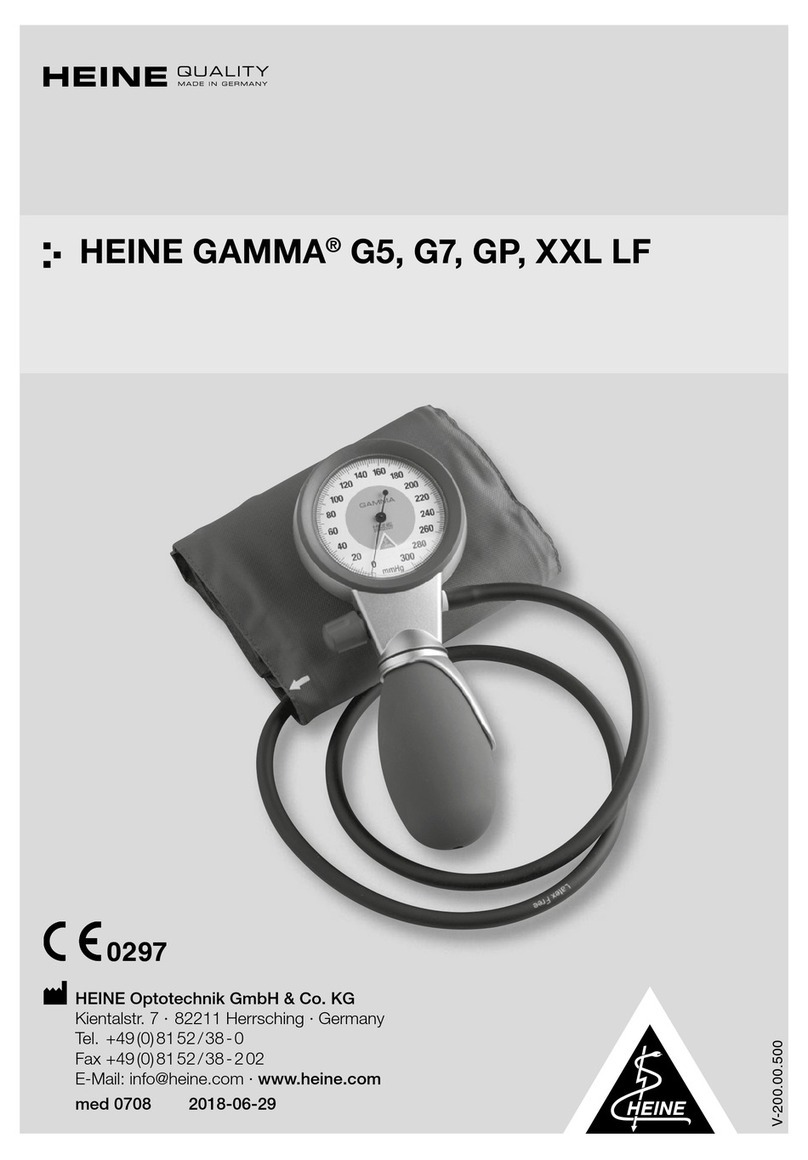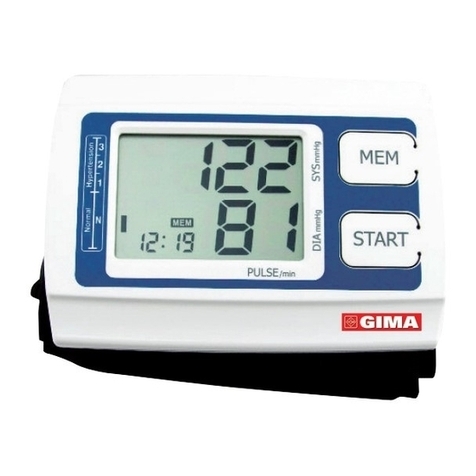Applying Your Blood ressure Cuff
IM ORTANT: Make sure that the unit is assembled correctly. Check
eartips to make sure they are securely fastened.
1. Sit upright but relaxed in a chair with a back. eep your feet flat
on the floor. Remove any constrictive clothing from your left arm.
2. Extend your left arm.*Find your brachial
artery, which is at the inner aspect of your
elbow. You may or may not feel your pulse.
3. Open the cuff so that you can slide your arm
into it. Do not extend the cuff beyond the
metal bar.
4. Insert your left arm into the cuff. Position the bottom edge of the
cuff approximately one-half inch ABOVE your elbow. The chestpiece
must directly touch the inside of your arm, over your brachial artery
(see step 2).
5. With your arm extended,
palm facing upward and
tubes positioned down the
center of your arm, use
your right hand to pull the
end of the cuff and secure
the hook and loop material.
MA E SURE THE CHESTPIECE
REMAINS OVER THE BRACHIAL ARTERY.
6. The cuff should fit comfortably, yet snugly around your arm. Check
for any gaps between the arm and the cuff.
*
The left arm should be used unless you are unable to or should not use your
left arm. Consult with your physician to assess which arm is best for you to
use.
Taking Your Blood ressure Reading
1. Insert the eartips into your ears. You can adjust the metal
binaural for comfort.
2. Rest your elbow on a
table with your arm
facing upward.
Elevate your hand so
that the cuff is at the
same level as your
heart. Relax your left
hand.
3. Position the gauge so it can be read without being moved. It can
be clipped to something such as a kitchen towel for
stability.
4. Hold the inflation bulb with your right hand and turn
the air release valve clockwise to close.
5. Begin inflating the cuff, SLOWLY AND STEADILY,
by pumping the inflation bulb until the gauge reads
30 mmHG ABOVE your last known SYSTOLIC
measurement.
If you do not know your last known SYSTOLIC measurement, inflate to
approximately 180-200 mmHg.
CAUTION: To prevent injury to yourself and/or the unit, never inflate
the cuff above 280 mmHg.
Taking Your Blood ressure Reading
6. Upon reaching the proper inflation level, SLOWLY
AND STEADILY, turn the air valve counter clockwise
at a rate of 2-3 mmHg per second.
7. As the pressure begins to drop,
carefully listen for your pulse
beat. Note and record the first
thumping sound you hear. This
is your SYSTOLIC pressure.
8. Allow the cuff to continue to
deflate. You will hear changes in
the sounds and then no sound
at all. When you hear the last sound, note the
reading and record. This is your DIASTOLIC
pressure.
9. Rapidly turn the valve counter clockwise to
deflate the remaining air. Remove the cuff and
record your measurement on your recording
chart.
NOTE: If you need to take another measurement, wait a minimum of
15 minutes between readings to allow for the blood vessels to return to
normal. The wait time may vary depending on your health.
Care and Maintenance
1. Do not wash or moisten the cuff.
2. Avoid dropping or hitting the surface of the gauge or
stethoscope chestpiece.
NOTE: As with any sensitive instrument, the quality and reliability of
the manometer gauge should be checked annually. When the cuff is
fully deflated, make sure the gauge needle is at zero (within the zero
square). A needle outside the square means the gauge needs to be
recalibrated or replaced by a qualified technician.
Limited One-Year Warranty
Your HealthSmart Home Blood Pressure it is guaranteed to be free of
manufacturing defects for a period of one year from the date of purchase
subject to the following terms and conditions:
1. This warranty is limited to the accuracy of the manometer gauge only.
It does not include the inflation system (bulb, valves, cuff and
bladder). If the manometer gauge failes to operate during the one
year period from the time it was originally purchased, please call our
Customer Care Help Line at 800-622-4714 and we will try to resolve
the issue as soon as possible. If the warrantor determines the unit to
be inaccurate due to normal use, the manometer gauge will be
replaced at the option of the warrantor.This does not include gauges
that have been misused or abused. A return shipping and handling
fee may be applied for all returns.
2. The warrantor shall incur no liability under this Warranty for any
damage from any cause other than inherent manufacturing defects.
3. ALL IMPLIED WARRANTIES, INCLUDING MERCHANTABILITY AND
FITNESS ARE LIMITED TO THE DURATION OF THIS WARRANTY. THIS
WARRANTY DOES NOT INCLUDE ANY LIABILITY FOR INCIDENTAL OR
CONSEQUENTIAL DAMAGES. Some states do not allow limitations on
how long an implied warranty lasts or do not allow the exclusion or
limitation of incidental or consequential damages, so the above
limitations or exclusions may not apply to you.
4. This warranty gives you specific legal rights and you may also
have other rights, which vary from state to state.
Quick Start Guide
1) Assemble the contents of your kit.
2) A 15-minute resting period is recommended to stabilize the
body prior to taking a reading.
3) Find your brachial artery, which is at the inner aspect of your
elbow.
4) Remove any constrictive clothing or jewelry that may interfere
with the cuff placement. Wrap the cuff snugly around your left
arm with the cuff’s bottom edge approximately 1/2” above your
elbow joint with the chestpiece positioned over the brachial
artery.
5) Rest your elbow on a table making sure the cuff is at the same
level as your heart.
6) Position the gauge in a stable, readable location.
7)Slowly and steadily, inflate the cuff 30 mmHg above your last
known SYSTOLIC reading. If not known, inflate between180-200
mmHg.
8) At a rate of 2-3 mmHg per second, begin to deflate the cuff.
9) The first “thumping” sound heard is your SYSTOLIC rate.
10) The last sound heard is your DIASTOLIC rate.
11) Record your measurements.
12) A 15-minute rest period is needed between readings to allow
the blood vessels to return to normal.
CAUTION: Never inflate the cuff above 280 mmHg.
Specifications are subject to change without notice.
#91-032-174 02/11
©2011 Briggs Medical Service Company
78910 11 12
Note Reading
at First Sound
Note Reading
at Last Sound
1931 Norman Drive • Waukegan, IL 60085
Toll-FreeCustomer Care Help Line: 1-800-622-4714
Monday - Friday 8:00 am - 4:30 pm CST







